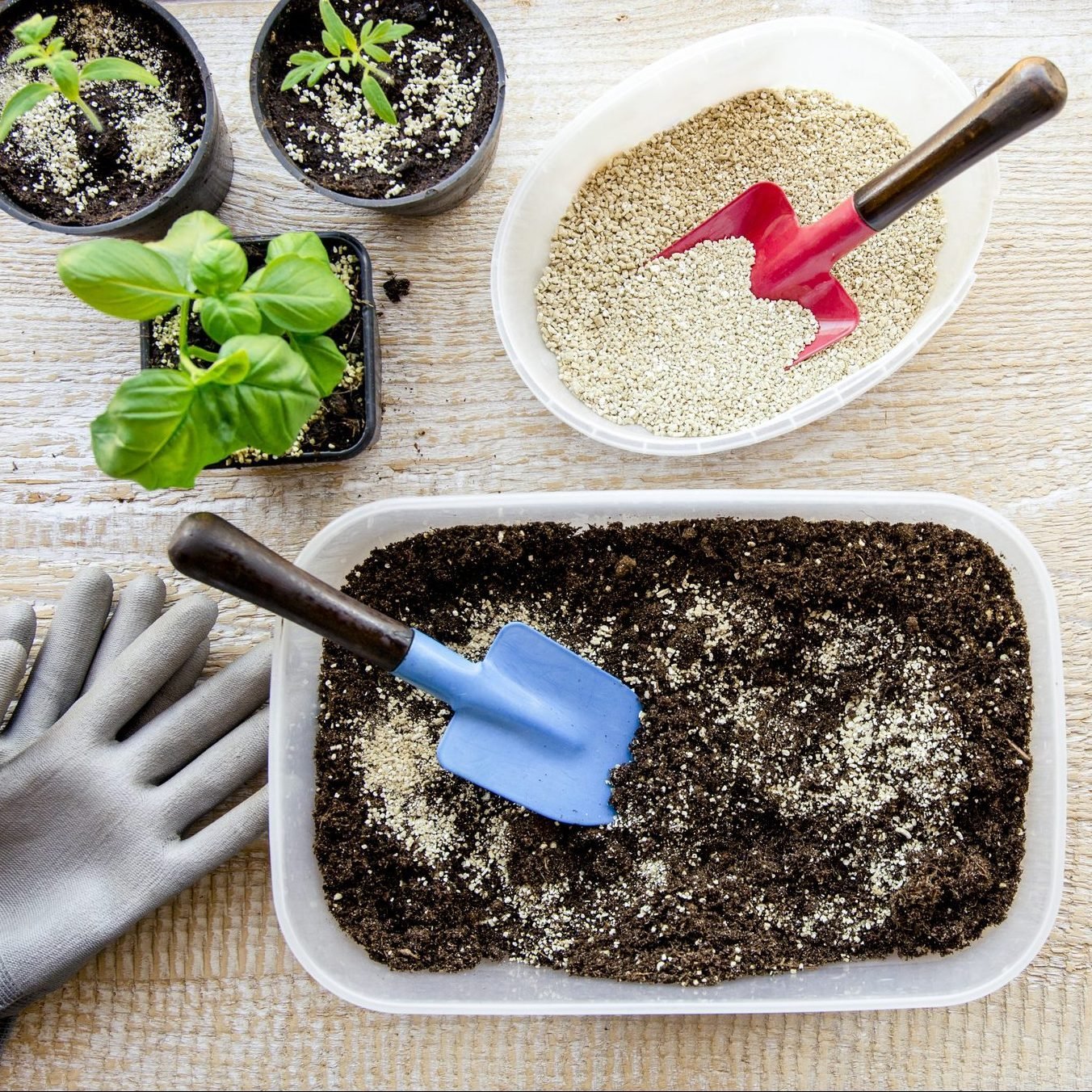Versatile vermiculite helps your garden, potted plants, seedlings and lawn germinate and grow more quickly.

How To Garden With Vermiculite

In 1824, scientist Thomas H. Webb named a mineral compound vermiculite, combining Latin and English words that roughly translate to “a rock that looks like a mass of small worms.” That aptly describes what vermiculite does when heated — it expands into low-density, worm-like strands.
Today, vermiculite is used as filler for paints, plastics and insulation. And in the garden, vermiculite’s texture makes it an excellent moisture-retaining soil additive.
“Vermiculite can also increase nutrient retention and soil aeration, resulting in healthier, more robust plants,” says Kelly Funk, president and expert gardener at Park Seed.
On This Page
What Is Vermiculite?
Vermiculite is a popular soil additive that improves soil quality and helps seedlings root. It is a naturally occurring silicate mineral, mostly made up of hydrated magnesium iron aluminum silicate. In the ground, it looks like mica with a golden to dark brown color.
“Unlike perlite, which is bright white, vermiculite can be hard to identify in the potting soil it’s mixed with,” says Funk.
How Is Vermiculite Made?
Vermiculite is mined, most often in Russia, Brazil, Uganda, Australia and the U.S. Then it’s heated, expanding into accordion-shaped granules through a process called exfoliation. After that, it’s sorted and sold in four different grain sizes.
What are the Benefits of Vermiculite?
“Vermiculite is best used for plants that require soil to stay damp,” says Funk. “It can absorb water three to four times its volume. It holds it like a sponge until the soil begins to dry out, and then it acts as a slow-release watering system.”
Besides water retention, vermiculite’s other benefits for gardeners include:
- Causes plants to germinate and grow more quickly;
- Helps anchor roots;
- Prevents root rot;
- Aerates soil by loosening it, so roots can grow more easily;
- Lightweight;
- Nontoxic;
- Odorless;
- Sterile, which prevents fungal growth;
- Helps nutrient retention by naturally reacting with soil compounds to make other nutrients available, including calcium, potassium and magnesium;
- Has a neutral pH (although it will raise soil pH slightly because of some compounds found within it);
- Permanently improves soil drainage.
What are the Downsides of Vermiculite?
While vermiculite is mostly celebrated by gardeners, it’s not perfect. Downsides of using vermiculite include:
- It’s expense;
- It’s lightweight and can blow away in wind;
- The amount of water it retains can make pots heavy to move;
- It’s a non-renewable resource;
- It can cause root rot for plants that don’t need damp soil. “It doesn’t aerate soil as well as perlite,” says Funk. “This means less oxygen for plant roots.”
Is Vermiculite Safe to Use?
Yes, with a catch — don’t use really old bags of it. Years ago some vermiculite contained asbestos, which can occur naturally near it. One of the most prominent vermiculite mines in the world was in Libby, Montana. Miners and town residents developed serious health problems from the asbestos, and it closed in 1990.
Today, with strict rules in place, all gardening vermiculite is asbestos-free and safe to use. But as with any particulate, it’s good practice to work outside, wear a mask, and handle and store it with care around pets and children.
How to Use Vermiculite in Your Garden
Vermiculite can take on many roles in your garden. It can be used as mulch around roses, or as filler underneath transplants. Here are other common applications:
Raised beds and lawns
You can buy soils with vermiculite mixed in, or mix it into soil with a one-to-three ratio. Work it into your beds with other soil amendments in the spring.
If you have particularly clay or sandy soil, work it deep into the soil to help aeration and moisture retention. For increasing lawn germination, sprinkle a quarter-inch layer on a freshly seeded lawn, then water.
Pots and container gardening
Buy a premixed vermiculite soil or use a one-to-three or half-and-half ratio with potting soil. “For those plants that need to be in damp soil, vermiculite will be effective,” says Funk. “But if you use it when growing plants that don’t need damp soil, you might find your plants suffering from root rot.”
Starting seeds
Vermiculite is particularly good for faster germination and allows tender roots to be removed for planting without damage. Start seeds in pure vermiculite or a potting soil mix. If using just vermiculite, add a small amount of water to prevent drowning the seeds, Once they sprout, add a little fertilizer.
Root cuttings
Put some vermiculite in a small pot, insert the cutting, then add water. For some roots, you may want to mix it with sand or soil.
Flower arrangements
To reduce how often you need to change or fill the water, fill a vase with one-third vermiculite and pour water over it before arranging the flowers.
Storing Bulbs and Roots
To overwinter bulbs and roots, take them out of the ground and let them dry out for a few hours. Then put them in a container filled with vermiculite, which will prevent them from rotting.




















